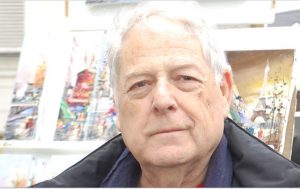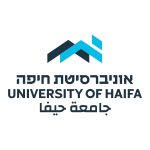
Prof. Uri M. Kupferschmidt
I became emeritus in 2013 after a long career in the department which began in 1971. As to my “pre-history”, I was born in Switzerland to parents who had been fortunate to escape the Nazis, grew up in the Netherlands, went to a classical gymnasium, and was active in the Habonim youth movement from which many members came to Israel.
From a young age I was interested in the Middle East. It was not a coincidence that I chose to study Semitic languages at the venerable university in Leiden. “Oriental” studies there had a long tradition, mainly because of the Netherlands’ colonial past. Emphasis fell (to a large extent) on Arabic philology and Islamic civilization, and in particular on scholarly erudition. Attention to history as a discipline, or even to the contemporary Middle East, was scant. Among the lecturers was not one native speaker of Arabic. But I seized the opportunity to strengthen my knowledge of Hebrew (mainly defined as an “ancient” language).
From there I intended to go on for a second degree in Paris, but with the students’ revolt approaching, I moved – just in time- to the School of Oriental and African Studies (SOAS) in London. I did not know much about that institution but it turned out to be one of my best decisions in my academic career. Neither could I know that our department would be staffed by several more colleagues who had studied there. The Middle East MA program in Area Studies comprised history, political science, and economy, a program which is today criticized as being too “essentialist”. But I learned there a lot, and the place was certainly more vibrant and refreshing than Leiden, and with many Arab students around. My tutor was Malcolm Yapp. His lectures would become a textbook which in the 1980s served our department as basic material. Bernard Lewis, I heard in his course on the Caliphate. By the way, a few years before he had published his then innovative book on Modern Turkey.
I was also taught by Peter M. Holt who had just edited the conference collection Political and Social Change in Modern Egypt (1968). In addition to being a historian of the Sudan, and equally of the Mamluks, he was interested in deepening his understanding of the social history of Egypt, and to share it with his students. This was a relatively young and challenging development, not a little based on studies by Gabriel Baer who would later become one of the two supervisors for my doctorate. By the way, Holt’s Egypt and the Fertile Crescent, in an era which still had few suitable textbooks for teaching, served us well till the appearance of more up-to-date works.
Furthermore, I should mention that in the seminar “Politics of the Middle East” – politics by definition after 1914-, I was allocated the subject of the Muslim Brothers, a movement considered defunct after 1954. It was not one of the more popular topics among the students who mostly preferred to deal with the dominant Pan-Arabism of the time. But as we know, the topic did not disappear from the agenda, and it stuck with me all the years. On the occasion of their eighty years in the field, I organized a study day at the University of Haifa of which the papers were published in a volume. Furthermore, the seminar was conducted by P.J. Vatikiotis, who was born in Jerusalem and grew up in Haifa, and a prominent researcher of Egypt, who even came for one year to teach in our department. He was one of a series of scholars from abroad who in those years spent their sabbatical years with us. All this indicates to what extent SOAS, as it was then, was important not only for me but also for the department.
In 1969 I came on aliya to Israel, and immediately enrolled in the doctoral program of the Hebrew University. The younger parallel institutions had not yet opened a doctoral track in Middle Eastern studies. After deliberations about a topic of research, I chose the “Supreme Muslim Council”, researching and writing under the supervision of Gabriel Baer and Yehoshu`a Porath. It must be understood that from an academic point of view, the history of the Palestinians was a relatively new field, with as yet a limited scholarly bibliography and few accessible or recognized archival sources. The wealth of sources in this field would develop in the succeeding decades. Up to this day I consider the joint seminar by Baer and Porath on “the Palestinian-Arabs under the Mandate” (sic, Eretz-Yisrael), its set-up, and with the students who participated, as a constituent academic course, not only for myself. In addition, in those days, studies on the region in the later Ottoman period, gained momentum (generated by Uriel Heyd, who passed away before I arrived, and later by Moshe Maoz and others). After 1967, also the study of the Shari`a Court sijills was becoming more profound, this opened also a window to studying the waqf as an institution (Gabriel Baer, Aharon Layish, Amon Cohen and others), which over the years reflected in the works by several of my fellow-students, and in a way also my doctoral dissertation.
By surprise, in the summer of 1971, I received an invitation by Gaby Warburg to teach the exercises of the Introduction to the Middle East in Haifa, a course which comprised a frontal lecture (by him, later David Kushner), methodological exercises such as reading documents and many writing assignments (at the time many more than today). The University was still small and so was the department.
Then I also began teaching a course on the Palestinians derived from my dissertation, which I later published as a book. I also published parts from it as articles (e.g., on the Islamic Congress of 1931, and “Islam on the Defensive”). From 1979, I succeeded Gaby Warburg teaching the pro-seminar on Contemporary Egypt, while he focused more on his specialization the Sudan. I have always considered Egypt as a particularly fascinating country in many respects, and pivotal to the region. In some courses I combined Islam and its institutions with social and regional aspects. At the same time not neglecting the Palestinians nor Turkey (only when I came to Israel, I began to learn Turkish since two Eastern languages were formally required, and I never regretted it).
All the years, teaching and research went together. I tried to diversify my curriculum a bit freeing it from the heavy emphasis on the Great Powers, namely Britain and France, and became curious about Belgium. This yielded my book on the Belgian industrialist Henri Naus Bey, which, more or less by default, became a biography encapsuled in the history of the sugar cane branch, and of the foreign and local elites in that epoch. Naus came to Egypt as a technician, not as an Imperialist investor, and even saved the sugar industry from bankruptcy for the benefit of Egypt. He would become one of the leading figures in the Egyptian economy. Analysis of his relations with Jewish interests (he himself was a Roman-Catholic) subsequently brought me to studying Jews in the Egyptian economy.
However, with all the different aspects which occupied me, I considered social history as my main direction. This is how it happened that I continued to teach this course for thirty years (together with a series of excellent teaching assistants), constantly adapting to new insights on the historiographical level and exploring fascinating new horizons. I was not a little influenced by the French Annales School. Over the years, the variety of research topics, and in this connection, the discovery of sources for writing social history, were expanding, as well as was their interpretation. One example was the field of women and gender which gained momentum. To a certain extent I focused on the effects of rural-to-urban migration, the social texture and class structure of the cities. This course was eclectic, which enabled me to introduce all the time new elements such as material history, consumerism and leisure, and mass media. Some of these even became topics for MA seminars, which naturally formed a more flexible framework for deeper discussion.
This was the conceptual framework in which I published my article on the sewing machine in the countries of the Middle East, and a book on the Orosdi-Back chain of department stores (founded by two Jewish families from Central Europe). These were new research departures for the Middle East. It is still a broad field which excites and engages me, even after the “turns” in research of the past decades towards cultural history for instance, and the changes in historiographical discourse.
It is still my intention to pursue my explorations into the diffusion of “small technologies” from Europe and the USA to the Middle East, as contrasted with “big technologies” such as railways, telegraph networks and electricity grids etc. Not long ago I published an article on this issue in a volume on the first modern globalization.
Apart from this, during more than twenty years I served as foreign correspondent of Dutch and Belgian radio broadcasting organizations, in fact as a commentator for Israeli and regional affairs. This occupation opened for me the possibility of useful trips in the region. Then, my new status as emeritus freed me of academic constraints, and with my background of a historian, another field opened up -in addition to the history of the Middle East-, namely the investigation into the pre-Sho’a generation of my family, with the purpose to preserve that narrative from being lost.
At the beginning of my studies in Leiden, it was still the habit to write in Latin (yes, in those days…) emeritus cum posserit adiuvabat, which can be freely translated as “notwithstanding being an emeritus, he will keep assisting to the best of his ability”.
* (עורך, עם מאיר חטינה) האחים המוסלמים, חזון דתי במציאות משתנה (בני-ברק: הקיבוץ המאוחד 2012)
* The Supreme Muslim Council, Islam under the British Mandate for Palestine (Leiden: Brill 1987).
* Henri Naus Bey: Retrieving the Biography of a Belgian Industrialist in Egypt (Brussels: Royal Academy of Overseas Sciences, 1999)
*“The Social History of the Sewing Machine in the Middle East”, Die Welt des Islams ,vol 44/2 (2004), pp 195-213
*European Department Stores and Middle Eastern Consumers: The Orosdi-Back Saga (Istanbul: Ottoman Bank Archives and Research Centre 2007)
*Strings and Celebrities: Hakkert’s “First Dutch Stringmakers” (Haifa: Pardes 2019)
*”On the Diffusion of ‘Small’ Western Technologies and Consumer Goods in the Middle East During the First Era of Globalization”, in Liat Kozma et al. (eds.), A Global Middle East, Mobility, Materiality and Culture in the Modern Age, 1880-1940 (London: Tauris 2015), pp. 229-260
Contact
Email: kpfrschm@research.haifa.ac.il

